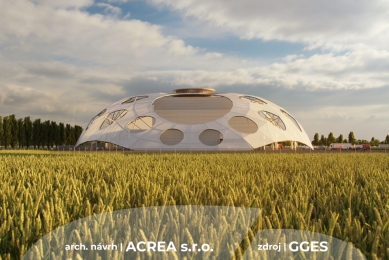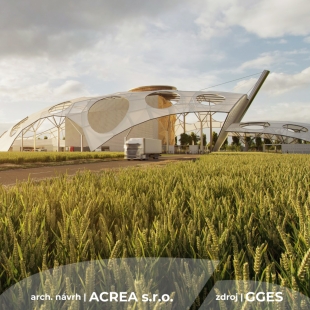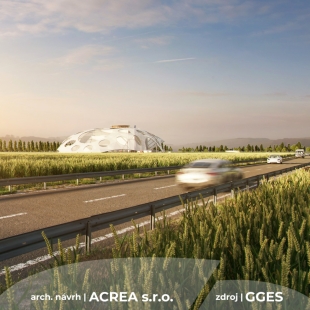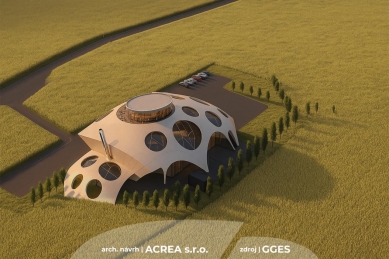
The referendum will decide on the Slovak incinerator near the Czech border
Sudoměřice (Hodonínsko)/Skalica (Slovakia) – Residents of Skalica will decide in a referendum on the future of the municipal waste incinerator in Slovak Skalica, which is set to be built close to the Czech border. The local council plans this after a public discussion on the EIA report concerning its environmental impact, it stated on its website. The construction prepared by the company GGES raises concerns among some residents of nearby Sudoměřice in Hodonín. The investor perceives this as a natural expression to which they are trying to respond, primarily by providing information based on professional studies. Ivan Rudolf communicated this on behalf of the company.
In Skalica, an Ecological Economy Center is to be established. The investment includes a waste-to-energy facility (ZEVO) with an expected capacity of 135,000 tons per year. For comparison, this is more than half of the capacity of the Brno-based Sako, whose boilers incinerate 248,000 tons of waste annually. The Czech Ministry of the Environment is also addressing the project in the international EIA assessment. Minister Petr Hladík (KDU-ČSL) also plans discussions in Sudoměřice regarding the intention on Friday.
Some local residents are concerned about a deterioration in living conditions due to the construction. "ZEVO is basically an incinerator. It is associated with more traffic, dust, odors, and possible hazardous substances in the air. Even if they were minimal, we are currently at zero, and anything additional is a burden. Furthermore, the view from the Baťa Canal to the White Carpathians could be disrupted," noted the mayor of Sudoměřice, František Mikéska (KDU-ČSL).
The investor acknowledges that people's concerns relate to health and environmental impacts, as well as a lack of relevant information. "That is why we are trying to provide the residents of Skalica, Sudoměřice, and anyone interested with verified facts based on scientific analyses and conclusions from professional studies," said Rudolf. He added that they often encounter arguments based on emotions and assumptions. "In just the past few weeks, we have participated in five public discussions or meetings with residents of Skalica and Sudoměřice, where we patiently and precisely answered questions and comments," he noted.
The visualization of the center resembles the design of the National Library building for Prague by architect Jan Kaplický. According to the Skalica town hall, the architectural concept of the object is a pleasant surprise that, instead of an industrial building with smoking chimneys, brings a visually sensitive piece that respects the character of the landscape. About 27 trucks would head to the incinerator daily, which, according to the study, should not cause greater road congestion. The investor also stated that there is no threat of exceeding legal air quality limits, and thanks to hermetically sealed halls, the odor will not escape into the surroundings.
The investor is negotiating with the leadership of Skalica about the benefits for the city and its residents. In addition to waste management and its conversion into electricity and heat for factories, public buildings, or some households, the company also hopes to create about a hundred jobs. Additionally, a reuse center and an educational center are part of the project. Citizens of Skalica are also expected to have lower waste fees.
The project is currently in the environmental impact assessment phase, followed by a public discussion. The council will subsequently announce a referendum. "I would be concerned about participation, but it is always good for citizens to decide on such a crucial matter," Mikéska believes. He awaits whether the investor will address the comments the municipality has regarding the project. However, he believes that even if it brings some benefits to the Slovak neighbors, the Czech Republic will not benefit from it at all.
In Skalica, an Ecological Economy Center is to be established. The investment includes a waste-to-energy facility (ZEVO) with an expected capacity of 135,000 tons per year. For comparison, this is more than half of the capacity of the Brno-based Sako, whose boilers incinerate 248,000 tons of waste annually. The Czech Ministry of the Environment is also addressing the project in the international EIA assessment. Minister Petr Hladík (KDU-ČSL) also plans discussions in Sudoměřice regarding the intention on Friday.
Some local residents are concerned about a deterioration in living conditions due to the construction. "ZEVO is basically an incinerator. It is associated with more traffic, dust, odors, and possible hazardous substances in the air. Even if they were minimal, we are currently at zero, and anything additional is a burden. Furthermore, the view from the Baťa Canal to the White Carpathians could be disrupted," noted the mayor of Sudoměřice, František Mikéska (KDU-ČSL).
The investor acknowledges that people's concerns relate to health and environmental impacts, as well as a lack of relevant information. "That is why we are trying to provide the residents of Skalica, Sudoměřice, and anyone interested with verified facts based on scientific analyses and conclusions from professional studies," said Rudolf. He added that they often encounter arguments based on emotions and assumptions. "In just the past few weeks, we have participated in five public discussions or meetings with residents of Skalica and Sudoměřice, where we patiently and precisely answered questions and comments," he noted.
The visualization of the center resembles the design of the National Library building for Prague by architect Jan Kaplický. According to the Skalica town hall, the architectural concept of the object is a pleasant surprise that, instead of an industrial building with smoking chimneys, brings a visually sensitive piece that respects the character of the landscape. About 27 trucks would head to the incinerator daily, which, according to the study, should not cause greater road congestion. The investor also stated that there is no threat of exceeding legal air quality limits, and thanks to hermetically sealed halls, the odor will not escape into the surroundings.
The investor is negotiating with the leadership of Skalica about the benefits for the city and its residents. In addition to waste management and its conversion into electricity and heat for factories, public buildings, or some households, the company also hopes to create about a hundred jobs. Additionally, a reuse center and an educational center are part of the project. Citizens of Skalica are also expected to have lower waste fees.
The project is currently in the environmental impact assessment phase, followed by a public discussion. The council will subsequently announce a referendum. "I would be concerned about participation, but it is always good for citizens to decide on such a crucial matter," Mikéska believes. He awaits whether the investor will address the comments the municipality has regarding the project. However, he believes that even if it brings some benefits to the Slovak neighbors, the Czech Republic will not benefit from it at all.
The English translation is powered by AI tool. Switch to Czech to view the original text source.




0 comments
add comment









